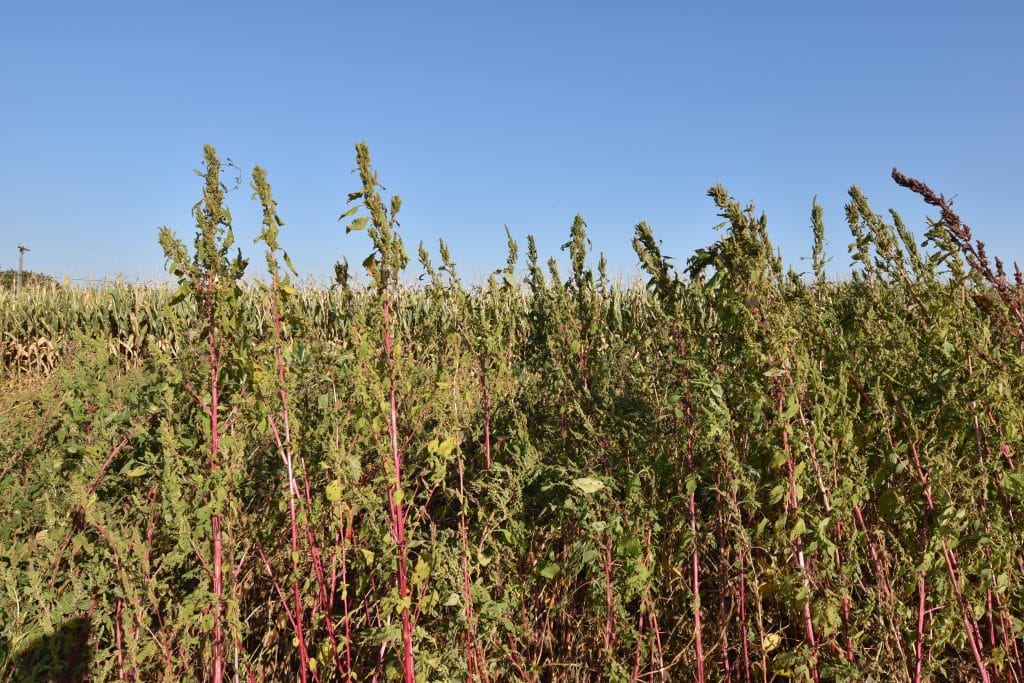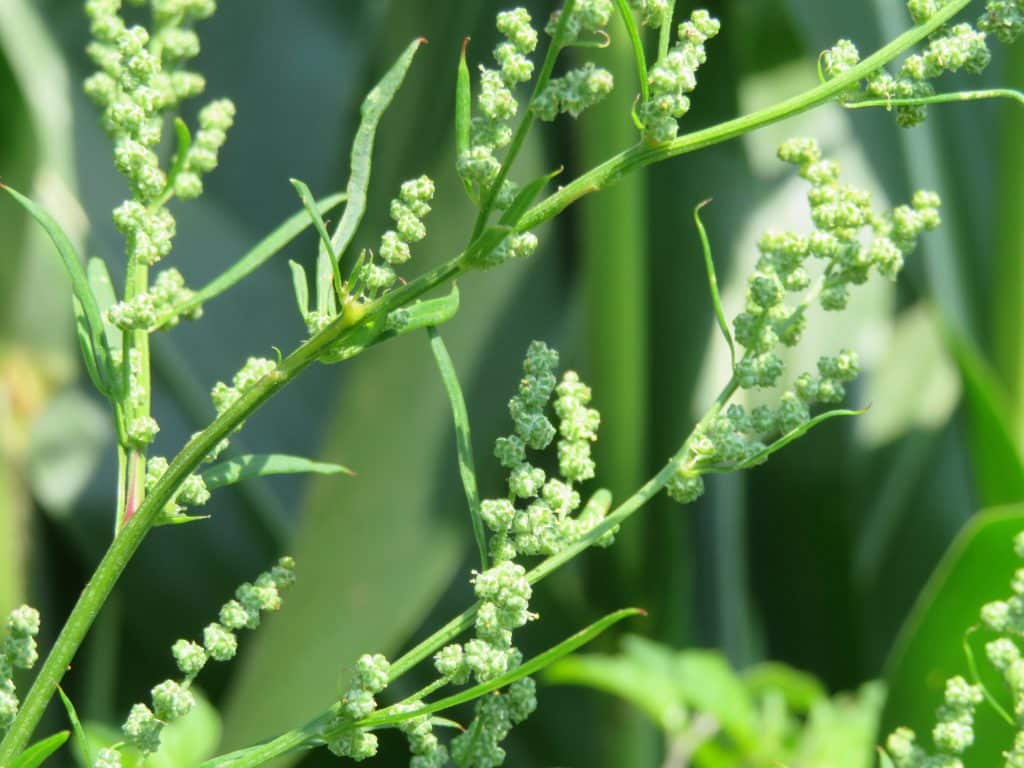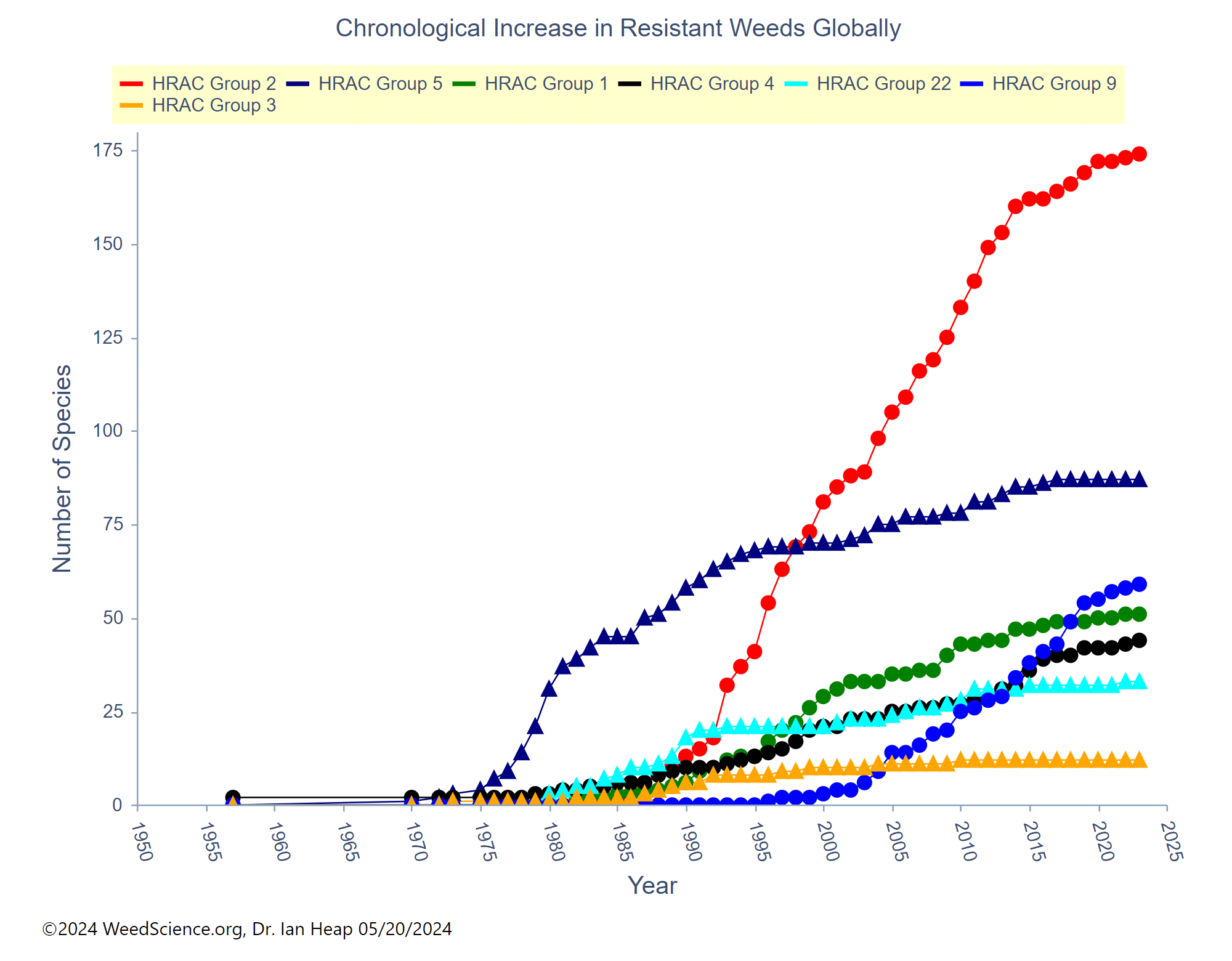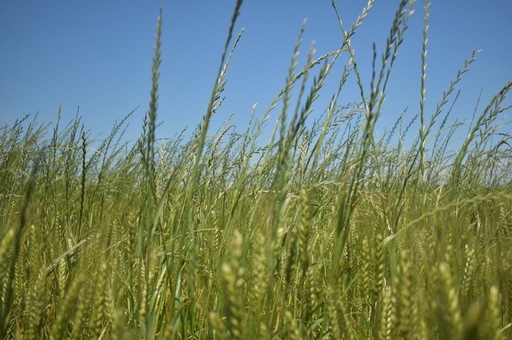The world is another year older, and its weeds are another year wiser. So what better way to jumpstart your New Year’s resolution to read more than browsing the newest weed management guide available in your region?

Here are the various regions and states that have put out fresh new manuals for 2024. Take a look! (Don’t see your guide here? Let us know!)
The Weed Management Planner: Fresh from the printers, this new resource from GROW is designed to be a quick-reference guide on how different weed and crop management tactics affect individual weeds. Created by a group of scientists in the mid-Atlantic, the planner is focused on that region, but will be relevant to many regions with similar weeds and cropping practices, such as the Midwest and parts of the South. Plus, it organizes weeds by their growing characteristics, so you can use the chart even for weeds that aren’t specifically listed. Read more about it here.
The Mid-Atlantic Weed Management Guide: New and improved, with updated herbicide tables, this 2024 version of the guide includes weed management practices and strategies as well as information on a broad array of common weeds in the mid-Atlantic. It’s a multi-state effort, produced by Penn State Extension in cooperation with the University of Delaware, University of Maryland, Rutgers, Virginia Tech and West Virginia University.
Ohio, Indiana, Illinois & Missouri: Likewise, this cozy quartet of Midwestern states (and neighbors) keeps things simple by joining forces for their annual weed management guide. In addition to the basics on herbicide management strategies for corn, soybeans, small grains and forages, the 2024 guide also has special sections on certain problem weeds and non-GMO soybean production. It is published by Ohio State Extension, in cooperation with Purdue University, the University of Illinois and the University of Missouri.

Iowa: This I-state stands alone! Iowa State University has released its 2024 Herbicide Guide, which doles out herbicide selection recommendations for corn, soybeans and pastures, as well as information on herbicide injury symptoms, herbicide resistance, invasive weeds and herbicide carryover risks.
Kansas: Not to boast, but the Kansas State 2024 Chemical Weed Control Guide is one of the university’s most popular Extension publications, notes Kansas State Extension weed scientist Dr. Sarah Lancaster. The guide covers several major crops, and is available online in PDF form, but you can also place orders for a hard copy. The new version contains some important changes to labeling, application practices and product use, so Kansas growers should check it out, Dr. Lancaster urges.
Kentucky: The 2024 Weed Control Recommendations for Kentucky Grain Crops is a comprehensive overview of herbicide use in the state. Produced by the University of Kentucky Cooperative Extension Service, the guide focuses on corn, soybeans and small grains.
Michigan: Michigan State University Extension has its 2024 guide available for sale now. The guide is aimed at helping field crop growers navigate their various weed management options.
Nebraska: The University of Nebraska produces an ambitious guide that encompasses not just weed management, but also insect and disease management for the state’s major crops, as well as pasture, rangeland, turf production and aquatics. The 2024 version is now available for purchase at UNL Marketplace.
North Dakota: Topping out at 136 pages, this 2024 guide from North Dakota State University is a deep dive into all herbicides registered for use on crops grown in North Dakota. It pulls together information from federal and state herbicide labels, the university’s research experiment stations and the state department of agriculture.

South Dakota: Now is the ideal time to evaluate your 2023 weed control and craft a plan for 2024, as South Dakota State University Extension weed scientist Dr. Eric Jones points out. To aid you in that effort, the university produces individual pest management guides for alfalfa and oilseeds, corn, soybeans and wheat. Each one covers recommendations for managing weeds, insects and diseases.
Tennessee: The University of Tennessee likewise released its 2024 manual, chock full of weed control recommendations for the state’s array of crops – corn, grain sorghum, soybean, burley, dark tobacco, wheat, and forage crops – as well as farm ponds.
Recommendations for weed management don’t necessarily change everywhere yearly, so not every region has produced an official new guide for 2024.
These versions below remain your best bet for expert recommendations on managing weeds in your state/region.
Arkansas: From alfalfa to wildlife plots, the University of Arkansas’s weed guide covers all the recommended chemicals for weed control in the state’s broad array of farming systems. In addition to the (hefty) single PDF, the guide is available by chapter, for easier downloading and reading.
The Pacific Northwest: Revised in 2022 and reviewed in 2023, this version of the PNW Weed Management Handbook remains an excellent resource for growers in this region, says Washington State University Extension weed scientist Dr. Drew Lyon. It’s an ambitious publication, covering weed control recommendations for the region’s enormous diversity of cropping systems, as well as biological weed control, pesticide handling, agrichemical properties and information on problem weeds in the region. Readers can view and search the handbook online, via a dropdown menu at the top of the website.
For more information on integrated weed management, see GROW’s webpage on it, as well as our weed management toolbox. You can also use GROW’s library of weeds for identification and education.
Text and header image by Emily Unglesbee, GROW; feature image by Claudio Rubione, GROW




















































